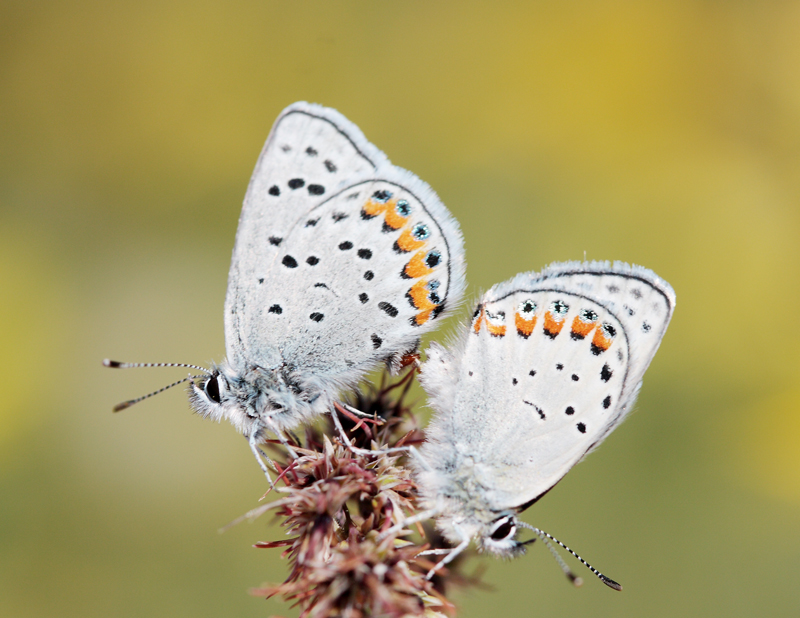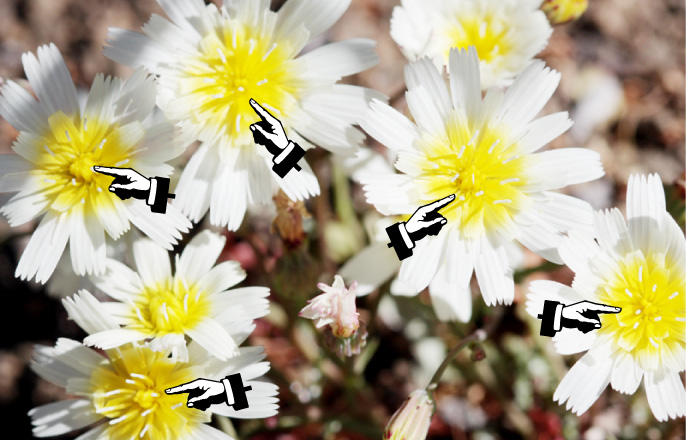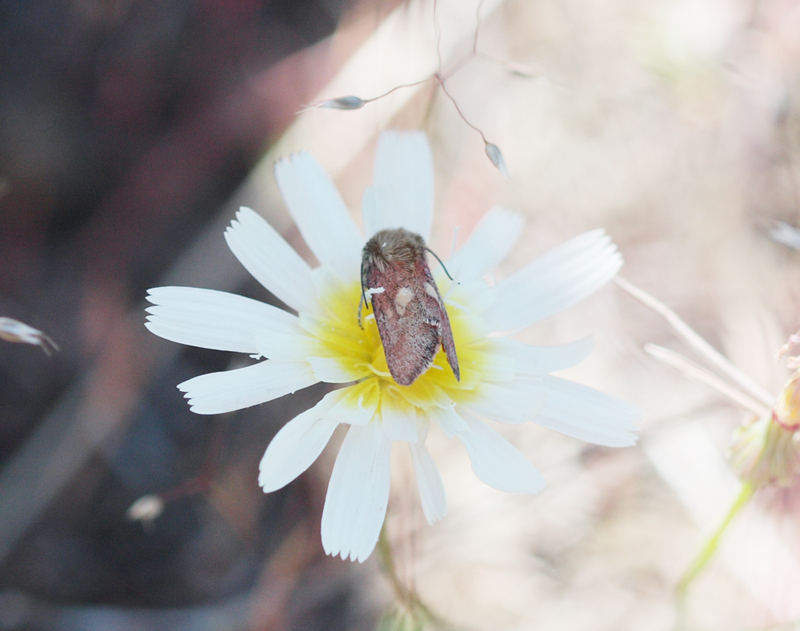Posljednja četiri vikenda sada sam u jurnjavi za guskom, za jedan mjesec, Heliolonche celeris. To je prekrasna mala Noctuidae s ružičastim prednjim krilima i zadivljujućim narančasto-crvenim stražnjim krilima. Ne susrećemo ga vrlo često i nalazimo ga samo duž planinskih lanaca sjeverne Kalifornije hraneći se Malacothrix floccifera – CA endemski cvijet. Svaki put sam dobio skunk, do danas – Skupio sam dva! Kao što se sjećate, moj prvi izlazak bio je prije otprilike mjesec dana, nema moljca, ali lijepa serija primjeraka i fotografije Adele moljci. Posljednja putovanja nisu bila ni približno produktivna kao ono u Adeli. Dakle, što učiniti kada ne pronađete svoju metu? Opekli se od sunca i snimite neke grozne fotografije.
 Uhvaćen na djelu. Plebejus acmon
Uhvaćen na djelu. Plebejus acmon
(nastavak u nastavku)
Ne baš moljac.
 Bez moljca, nema moljca, nema moljca…
Bez moljca, nema moljca, nema moljca…
JEDAN MOLJAC!
Ovaj H. celeris pokazuje tipično ponašanje cvjetnog moljca, sjedi na cvjetnoj glavici običan kao dan. Oni zapravo ostaju ovako cijelu noć na cvijetu (čak i ako se zatvori oko njih kao što to čini neko cvijeće – što dovodi do toga da su kolokvijalno poznati kao “taco moljci”… jer moljčeva guza viri pored latica i izgleda kao da je u tacou). I upravo zbog toga sam napustio svoj stan u 6 ujutro da stignem 8. Ako je vani još hladno, ne trzaju se ni kada se približite. I, ako ne lete, lako je istražiti područje za moljce i znati da niste propustili nijednu. Ali, čim ih sunce ugrije, postaju brza kopilad i nestaju prije nego što uopće stignete posegnuti za poklopcem objektiva. Ovo je prvi moljac kojeg sam danas vidio i nisam se potrudio napraviti sjajnu sliku. Subjekti imaju gadnu naviku odletjeti odmah nakon što dobijete dobar snimak (dobro, obično neposredno prije dobrog udarca)… i nisam mogao riskirati da izgubim jedini primjerak dana.



Where’s the “like” button? Great pics and good commentary.
“Bez moljca, nema moljca, no moth…”
Ima. I lol’d.
It is a pretty little thing…
A colorful, day-flying moth that sits prominently in the center of flowers – chemical defenses?
That’s a good question, and it has crossed my mind before. There a lot of these small day flying flower moths that are clearly not cryptic yet I haven’t ever read about any chemical defenses or mimicry. I also don’t think of Malacothrix as a particularly noxious plant… will investigate.
u redu, now I have to post the latest mystery moth pics I took a few days ago. (4/30) Pretty please if you have a moment, check it out and render your sage opinion. !
Ted’s question has nagged me this week. I’ve never heard of anyone studying this, ali… Has anyone seen these flower moths under UV? See a related flower species under UV here: http://www.naturfotograf.com/UV_SENE_AQU.html. Maybe, while sitting on the bulls-eye, these moths become “invisible” to predators who see UV, such a birds. The added bonus for the moths is this might increase their chances of finding a mate which is attracted to the UV bulls-eye.
You have to be right about that Katie, I’ve been thinking about this too. I can’t recall any literature in reference to adult insect UV crypsis. There is some work in regards to caterpillars… but I’ll have to do some more digging. Birds are probably not the primary predator on these moths since their acute vision makes them incredibly difficult to approach in the daytime. Ali, most lizards see in UV and these flowers are just about at head level for most small reptiles (and there were a ton on site).
Sometimes, the light bulb just turns on.
So there is a monograph to this subfamily – and in there Hardwick (author) points out the counterintuitive crypsis of this moth! Instead of a good idea he postulates
Tako, he just assumes they are oddities because the flowers changed without them and they survived “possibly because of a decrease in predation pressure”.
Seems to me that UV crypsis is much more likely. I… I don’t believe that’s been shown in adult Lepidoptera. Add it to the list!
; ) Just make sure you credit me for this idea when you become the ruler of the universe, su… recognized expert on lepidopteran UV crypsis. I’m glad you looked it up. Please let me know if you find out any more info.